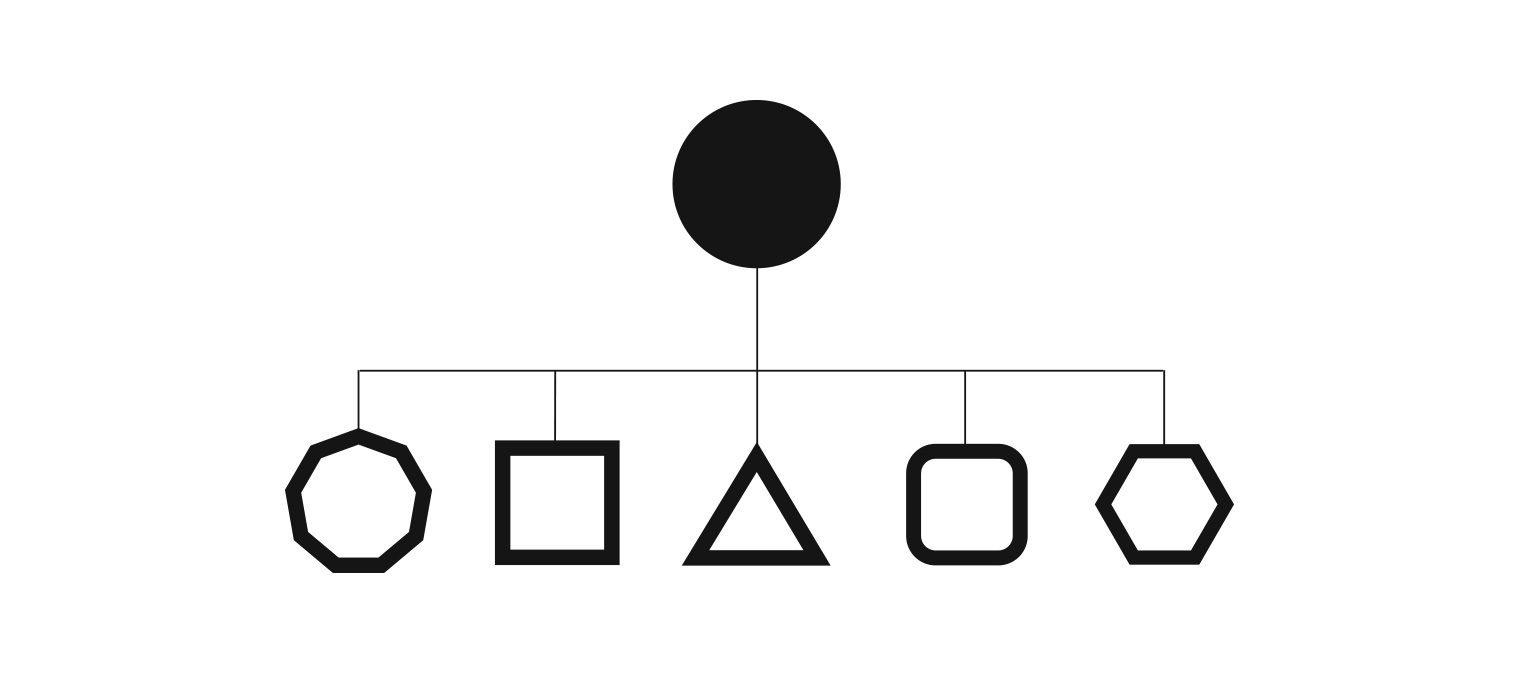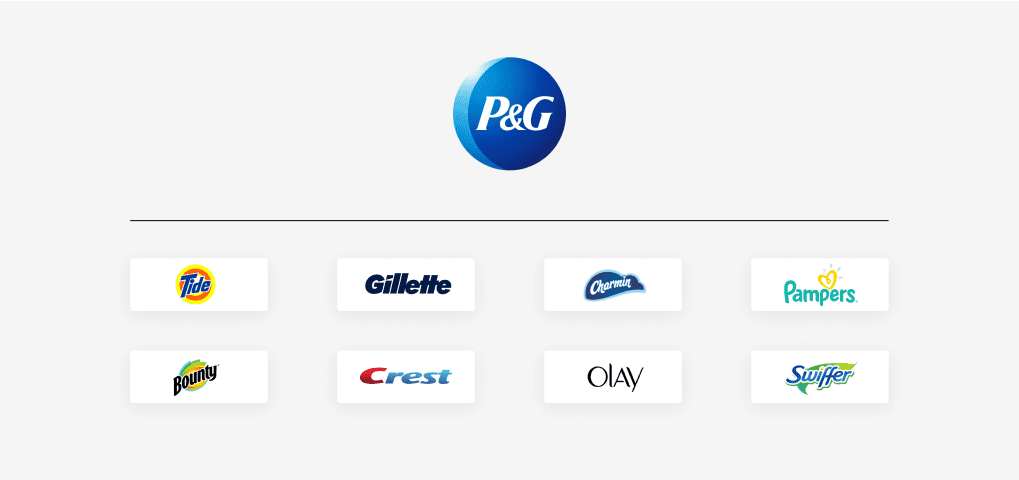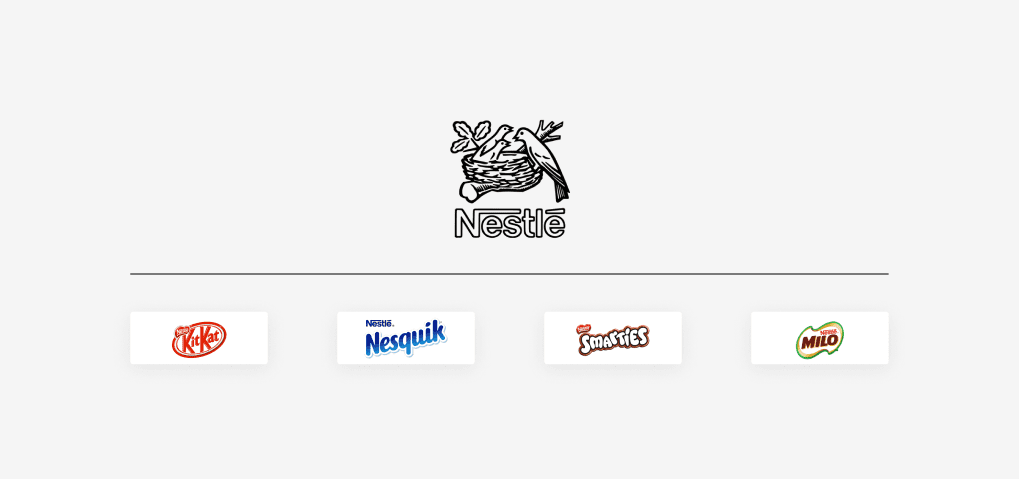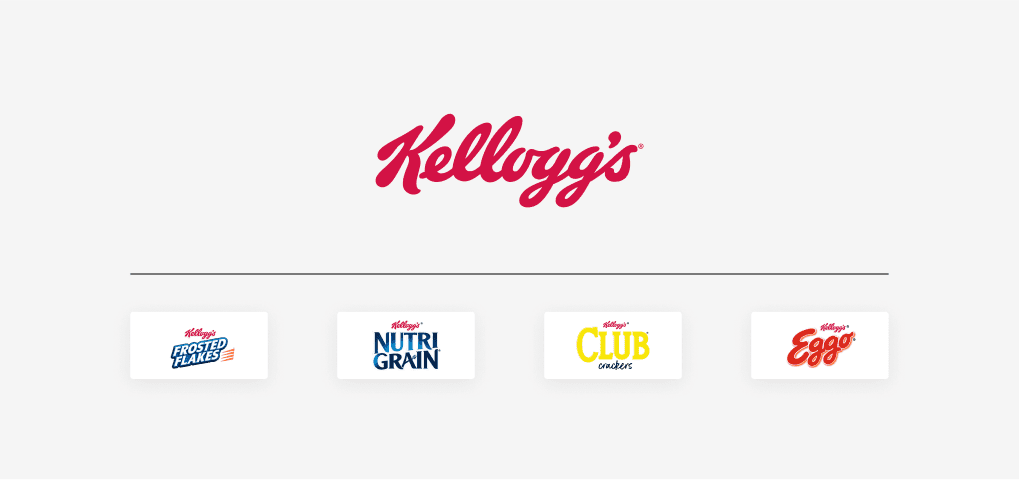A sneak peek into the strategies of the biggest brands
Yes, brand architectures matter. And no, they are not just for big established brands.
You can understand brand architecture as the basic structure of your organization, and it’s more like a flow chart that depicts exactly where your brands/products are placed.
It helps you portray your brands more mannerly and structured way while ensuring your offerings are also in focus.
While it is not something that only big brands follow, you will have to consider the size of your business, offerings, and your ultimate objectives before you go ahead and create one for yourself.
But all that is going to happen when and if you understand the concept altogether, so how about we focus on doing that first?
Let’s go ahead and discuss brand architectures in detail, and then maybe we can discuss how you can create one for your brand if it’s required.
What is brand architecture?
A brand architecture helps in interlinking the different brands of the organization with the master/parent brand.
Just like it’s shown in the image below, your brand architecture is more like a flow chart where your primary/master/parent brand sits at the top of other sub-brands/products/services.


These subcategories of the parent brand are its derivatives. (how each of these derivatives will be linked to the parent brand is subject to the kind of brand architecture you choose- to be discussed in a while).
That is something you understand by this point. But for a more practical understanding, let’s take the example of Apple.
People love Apple for its functionality and innovative designs. Moreover, the brand is known to offer a status symbol to those who own it. But did you know even Apple follows a brand architecture? Here’s how it looks


The brand’s architecture is such that Apple sits at the top of other sub-brands like Apple TV, iMac, iPhone, Apple Watch, and iPad.
These are different brands of Apple unified under a master brand.
Apple has smartly provided a structure to its product catalog; Consumers can easily link them with the parent brand while letting them keep these as separate offerings.
Another excellent example of brand architecture is Google.
Google has become a vital part of our lives, and almost every person relies on it. From Google Search Engine to Google Maps and Books, we have become addicted to everything that Google offers.
And just like Apple, even Google has a straightforward brand architecture.


Google sits at the top of each sub-brand and acts as the way paver.
But is that it? Is brand architecture all about having a weird flow chart of your services?
No. And that is where we start talking about the significant brand architecture models.
The three significant models of brand architecture: which one to consider and why?
No, brand architectures are not only about building a structure; they also decide how your sub-brands will be linked to your primary brand.
Whether you want your sub-brands to point directly to your master brand or not. And if you would prefer for them to follow the similar brand feel and look or not. These are two important questions that these brand architectures will answer for your brand.
For instance, if we go back to the examples we took. Both Google and Apple follow the same brand architecture model, namely Branded House.
You can only at a glance conclude that Apple has linked its sub-brands very closely. Apple’s sub-brand follows the master brand’s positioning, look, feel, and brand identity. This allows the parent brand to maintain a consistent brand identity.
Similarly, Google also has done the same. It has kept the entire brand identity consistent for each sub-brand. Helping the brand reach a vast audience while minimising marketing costs. Not just that, it also helps the sub-brands, especially the ones that are new in the market, leverage the reputation of the master brand.
Most brands choose to go with this model of brand architecture.
Such a structure prefers to keep the organization as the master brand. Which owns and dominates other sub-brands that usually feature the parent brand name and logo for easy identification and consistent brand identity.
You can think of it as the most comprehensive strategy of all time. It allows the sub-brands enough space to perform all by themselves in the market while ensuring they carry the name of the master brand.
Some other brands that follow the Branded House Model:
Samsung. The same model has done wonders for Samsung as well. They use a very minimalistic approach and keep it simple, just like the other brands we mentioned earlier.


See how these brands have benefited from the Branded House Model:
- This model is comparatively more straightforward than others and helps brands establish a powerful presence in the market, given the consistency of brand identity.
- It helps new launches of brands make it to the market quickly as they draw from the reputation and consumer segment of the parent brand.
- Allows the parent brand to target a wider audience.
There are some disadvantages too, though!
- Since these sub-brands are closely linked with the master brand, their market goodwill is also quite interrelated. The fall of one can lead to the fall of other linked brands.
- Over time, when a master brand chooses to launch several products and services, the parent brand may fail to retain and keep up with its overall brand message. Launching different products can cause the message to become bleak and unspecified altogether.
- As compared to other models, Branded House is considered very inflexible.
Next, the most prominent example of the second major brand architecture model, i.e., House of Brands, is Unilever and P&G.


Unlike Google and Apple, Unilever adapted to an entirely different architecture model. Their sub-brands, although linked to the parent company, are very distinct from it. They all have their own brand identity and positioning, and the entire look and feel of the sub-brands are also very different from the parent brand.
Such a model is apt for brands with an extensive range of products who want to target varied audiences for the same reasons.
Like Unilever, P&G is another parent company with a very extensive range of products. The company parents many renowned brands like Pampers, Pantene, Olay, Tide, and many more. P&G also took the path of Unilever and positioned its brand differently from its parent company.


Most companies who follow the House of Brands models keep it low-key and choose not to link their parent brand majorly with their sub-brands, considering the diversity in their marketing strategies, pricing, and target audiences.
This model allows you to be versatile and targets several target audiences and market segments while having specific value propositions for each sub-brand.
Although to keep up with this more can become complex and highly costly since you will have to focus on each sub-brand individually. Each brand will have its marketing requirements, and keeping up with all that can scale your costs.
In this case, the parent brand’s role is to sit at the top of these organizations and act as a managing branch that will be helping other sub-brands function as if they are in no way connected to each other. Besides marketing costs, legal compliances can also levy huge costs for organizations following this model.
See how these brands have benefited from the House of Brands Model:
- Since these brands are so differently positioned, negative remarks of one brand don’t impact others.
- The master brand acts as the managing branch, ensuring sub-brands get the required resources.
There are some disadvantages too, though!
- We’re sure even you must not have noticed that Pantene and Tide are two brands of the same master brand. Similarly, the brand value of the parent company might diminish as the company starts widening its catalog.
- It’s a considerable expense for the company.
- New brands can not draw from the reputation of the parent brand; hence, they will have to perform on the market and start afresh.
For the companies who can’t find recourse in these categories, there’s a middle road named “Endorsed Brand” open for them to take.
The two most important examples of Endorsed Brands are Nestle and Kelloggs.


Those who find themselves in a dilemma and are unsure of which model can benefit and suit the business model have to go for an endorsed brand model of brand architecture. Nestle is a very renowned food and beverage company, having multiple brands. These brands include Maggi, Nestea, Kit-Kat, Milkybar, and many more.
Each of these brands has a concrete consumer base; in such a case, sub-brands draw from the parent brand’s reputation and market positioning; however, it’s kept minimal, and enough room is there for these brands to nurture on their own.
In the case of Nestle, you can see clearly that the brand has a very established presence.
However, if you’ll take a closer look at the products, they’re not in complete sync with the master brand’s identity; they have their individuality in the market even though the master brand’s name and logo are primarily associated with the final product, so that it’s not entirely isolated like in the case of House of Brands.


Just like that, Kellogs also follow the same model of brand architecture.


The brand ensures its sub-brands receive from it positively but keeps it low-key enough to allow them to grow individually and earn their place in the market. Kellogs is a renowned American cereal maker with various products and brands building and flourishing under their master name.
While they have not followed the Branded House model of architecture strictly, they have kept it minimal with just their name/logo on the products that operate under them.
In cases where companies opt for this kind of brand architecture, there remains a very minimal yet impactful synergy between the master brands and sub-brands.
See how these brands have benefited from the Endorsed Brand Model of Brand Architecture.
- Brands that follow the endorsed brand model of architecture draw from the reputation and equity of the master brand.
- They build on the established brand presence of the parent brand.
- The sub-brands are provided enough room to have their individual identity.
There are some disadvantages too, though!
- Negative publicity of one brand can impact other sub-brands along with the master brand.
- Even though the brands operate individually, there needs to be a synergy between them and the master brand to some extent.
Concluding Remarks
Hopefully, you understand how brand architectures work and why they are so important for brands today. Without them, a company lacks structure. Brand architecture might seem like something a big established brand would need, but the reality is any brand with several offerings can benefit from a brand architecture.
All you need is the right vision and professionals to help you out.







